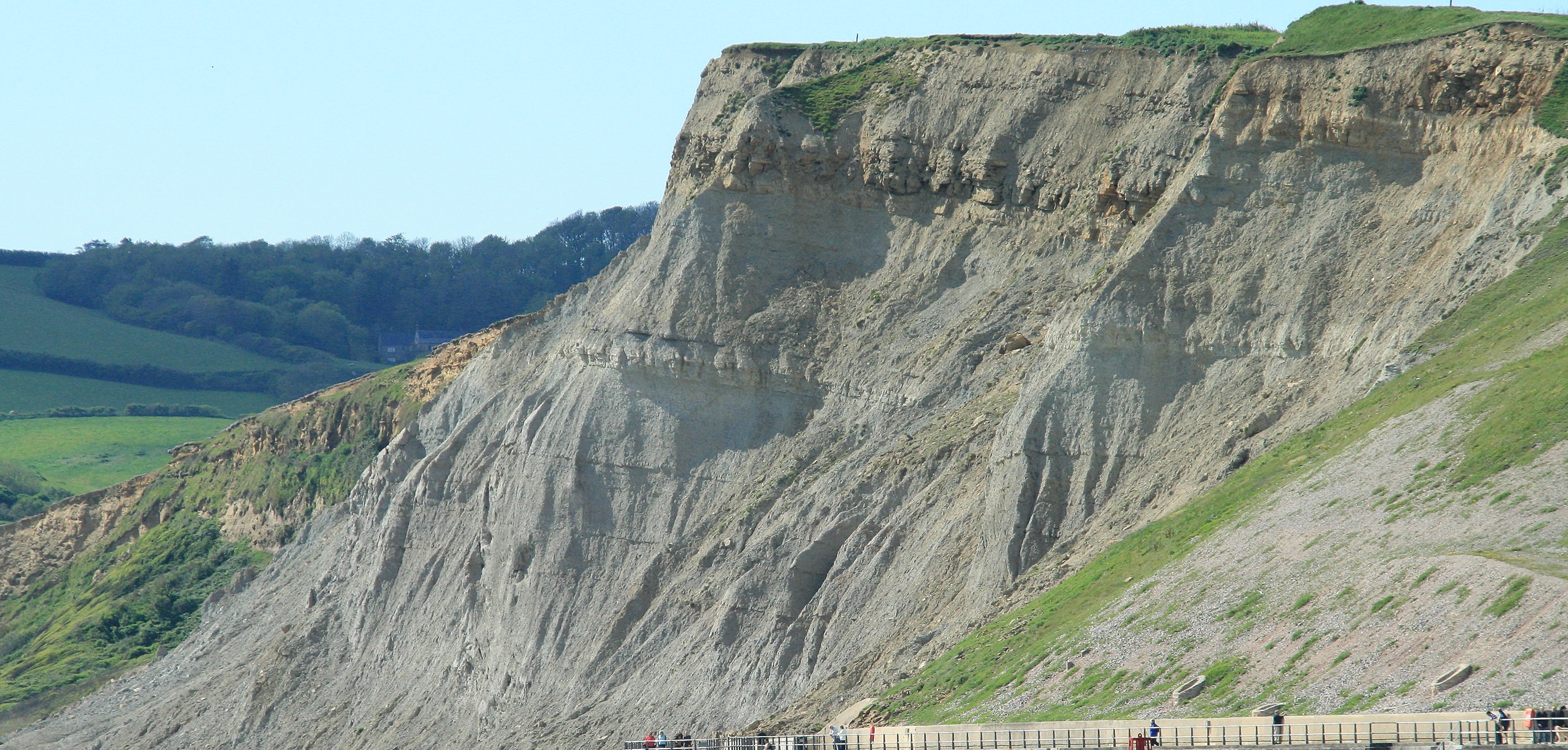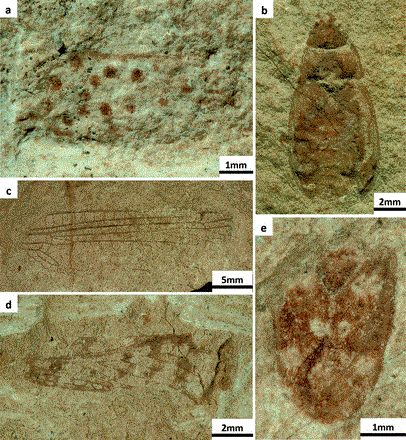
What exactly are Fossils?

 |
West Bay Geology
What exactly are Fossils? |
 |
Animals have both hard and soft parts. Humans for example have bones (hard) and muscles (soft). In general the softer parts of any animal will not survive the process of rock formation. In well over 99.9% of cases the temperature and pressure caused by the burial of rocks will lead to the soft material decaying away, that is assuming that normal bacterial decay has not done the job way before then. However the hard parts of organisms have at least some small chance of surviving the stress and strains of rock formation. If a piece of bone falls into the mud at the bottom of the sea and that mud is then buried, then as the mud is squished the bone might remain intact, effectively forming a cast of the bones shape. The bone itself is made up of organic minerals, and in general, these minerals themselves will not survive the temperature and pressure of the burial. What can happen is that the warm fluids that are traveling through the rock as it is buried will flow through the cast of the bone, and in the process the organic minerals will be replaced with non organic ones such as limestone or silica (quartz). The net effect can thus be that within the rock, in this case a mudstone, you might find a replica of the original bone, but this replica is made out of limestone or silica/quartz.
So, when we find a fossil in a rock typically what we are seeing is a cast made out of rock but which shows at least the external outline of the original hard part of an animal. In fact, the same can be true for any organic hard material that is buried. If the trunk of a tree is buried then this might end up being converted to a tree trunk shaped fossil, made up of quartz or limestone. If you visit the White Nothe headland the other side of Weymouth and take a walk along the foreshore you can see examples of the fossilised trunks of tress. They weather out of the surrounding mud as the silica that has replaced the wood is harder than the surrounding mud.
This process of fossilisation is not certain to happen, in fact it is probably only in rare circumstances that the conditions are right for this to occur. But, as geological time is very long only a small percentage survival of the hard parts of animals can (and does) lead to a lot of fossils.
For many marine animals their hard parts are already made out of limestone, typically the mineral calcite. Even in such cases it is not at all usual for the original calcite to be retained. The shells have been made organically and hence are liable to transform in the burial process. What tends to happen is that the organic calcite is often replaced by inorganic limestone minerals, perhaps calcite again or possibly other types of limestone such as Aragonite.
So when you find a fossil you are almost certainly seeing the shape but not the original substance of the organism that died.
Of course, this is Geology, so there are exceptions. When the conditions are just right, and we are talking about a one in a billion chance, then as well as the hard parts of organisms being preserved then the soft parts are also retained. Such extremely rare occurrences are like Palaeontological gold dust as they allow us now to look not just at the skeletons of creatures from hundreds of millions of years ago, but also to gain an insight into what these organisms actually looked like. Perhaps the most well know example (at least for people who have seen the film Jurassic Park) would be the cases where insects are entombed in wood sap, which then hardens to form a rock called amber which then preserves the form and substance of the original creatures. There are however other cases, one being the preservation of the feathers on the fossilised remains of Archaeopteryx a famous type of winged dinosaur. and the other being the preservation of Trilobites (one of my favourite types of fossil, so please feel free to ask me about them sometime) in soft mudstones in the Burgess Shale formation in British Columbia. These types of rocks are often called "Lagerstätten", which literally translates to "Lucky Strata", to indicate how rare they are. The nearest such location to us is the area outside Illminster in Somerset called Strawberry Bank where the soft parts of various insects and sponges have been exquisitely preserved as silica casts in rocks of not that dissimilar age (they are Toarcian, and see how good it is to make use of the proper geological sub-preiod name!) to those seen on the Dorset coast. The image below shows pictures of some of these tiny fossils.

To sum up, when you pick up a rock on the beach and find a fossil in it, you are seeing the result of the lucky preservation of an original creature. Then, as you run your fingers over the actual fossil you are (and I think this is quite sad) not touching the original hard shell or bone of the creature but rather feeling the rock that has grown to replace the original part.
Next Section - Summary
Previous Section - Other Influences on Rocks
Back to Introduction